Abstract
Pigeons were trained under a discrete-trials detection procedure in which one of a set of color stimuli was presented on the center key and a single response turned off the stimulus and illuminated two side keys. Single responses to one or the other side key produced occasional reinforcers depending on the value of the color stimulus. In Experiment 1, one color-stimulus set comprised 559, 564, 569, and 574 nm, and right-key pecks were occasionally reinforced following presentations of members of this set. The other stimulus set comprised 579, 584, 589, and 594 nm, and left-key pecks were occasionally reinforced following presentations of members of this set. Across seven experimental conditions, the left/(left + right) relative reinforcer frequency was varied from .1 to .9. In Experiment 2, one stimulus set contained only one member, 574 nm, and right-key responses were occasionally reinforced following its presentation. Over 12 experimental conditions, two manipulations were carried out. First, the number of stimuli comprising the other stimulus set was increased from one (579 nm) to two (579 and 584 nm) to three (579, 584, and 589 nm) and to four (579, 584, 589, and 594 nm), and left-key responses were reinforced occasionally following center-key presentations of members of this set. Second, for each stimulus combination, the left/(left + right) relative reinforcer frequency was varied from .1 to .5 to .9 across three experimental conditions. The principal finding of Experiments 1 and 2 was that reinforcers and stimuli interacted in their effects on behavior. In Experiment 3, pairs of adjacent stimuli (5 nm apart) in the range 559 to 594 nm were presented in each experimental condition, and the left/(left + right) relative reinforcer frequency was held constant at .5. The data from all three experiments were analyzed according to a detection model describing performance in multiple-stimulus two-response procedures. This model provided independent measures of stimulus discriminability, contingency discriminability, and bias. The analysis showed that (a) consistent with the color-naming function, pigeons were better able to discriminate between higher nanometer values than lower nanometer values; (b) their ability to discriminate between the stimuli was independent of the number of wavelengths comprising each stimulus set; (c) they allocated delivered reinforcers very accurately to the previously emitted response; and (d) no consistent biases emerged.
Keywords: signal detection, multiple-stimulus control, stimulus discriminability, contingency discriminability, bias, key peck, pigeons
Full text
PDF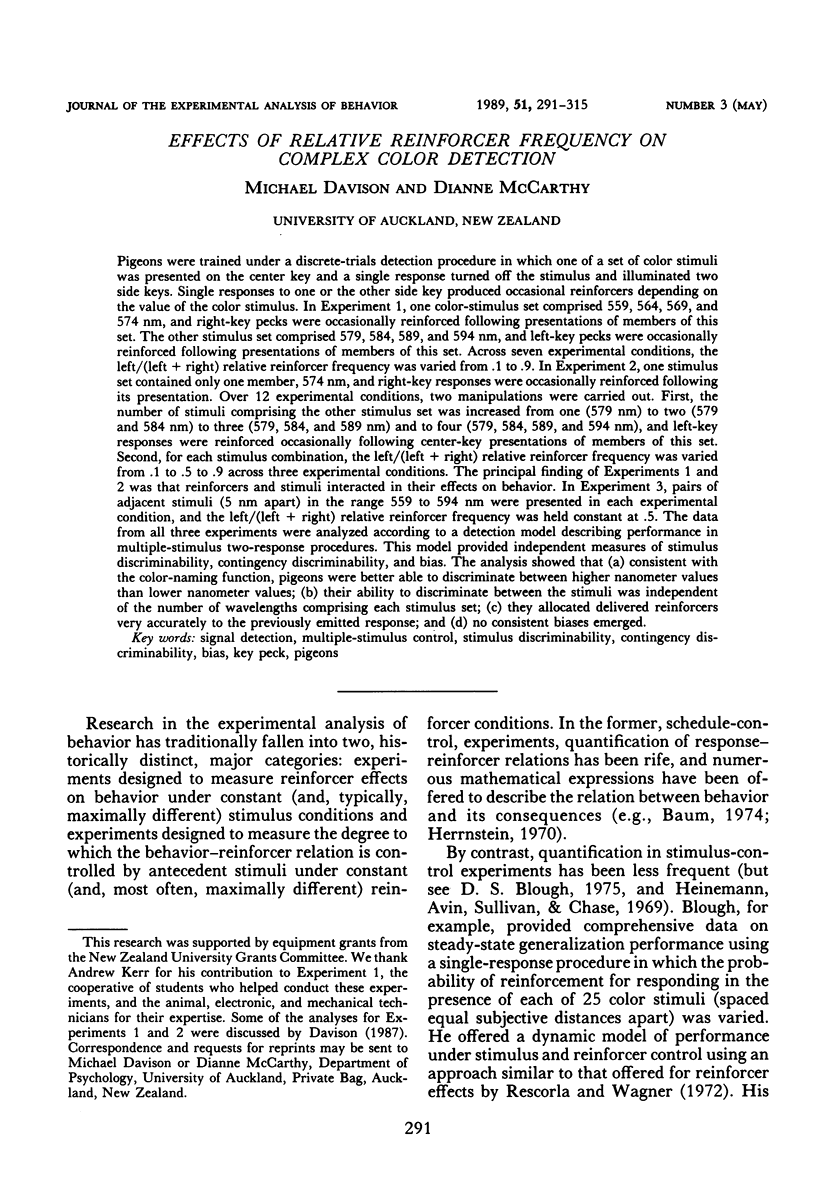
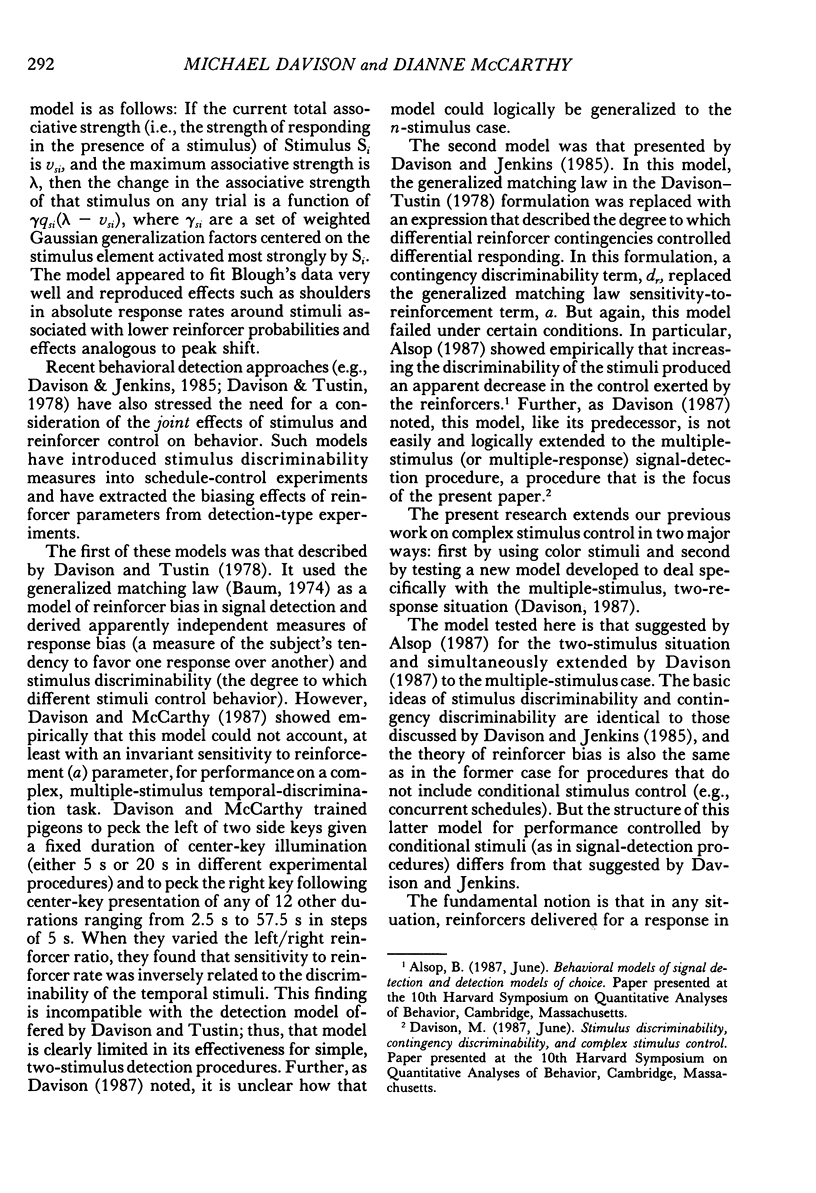
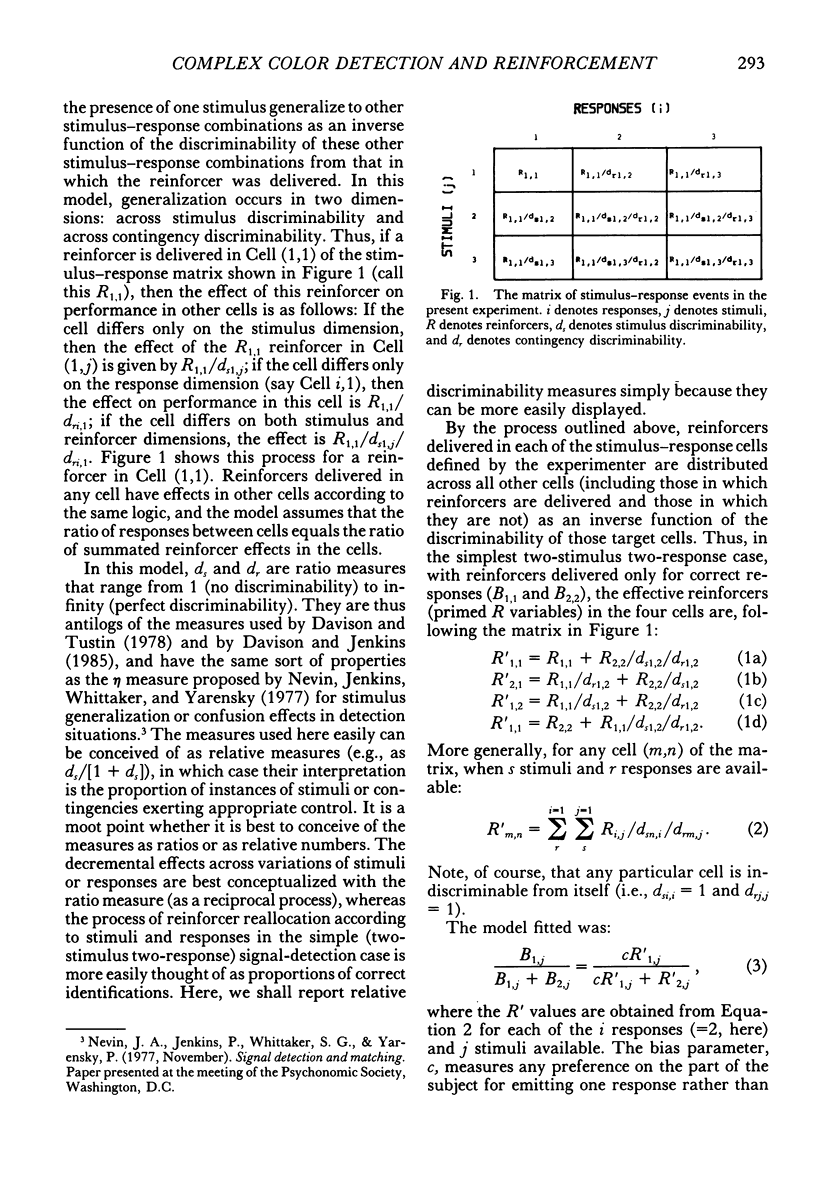
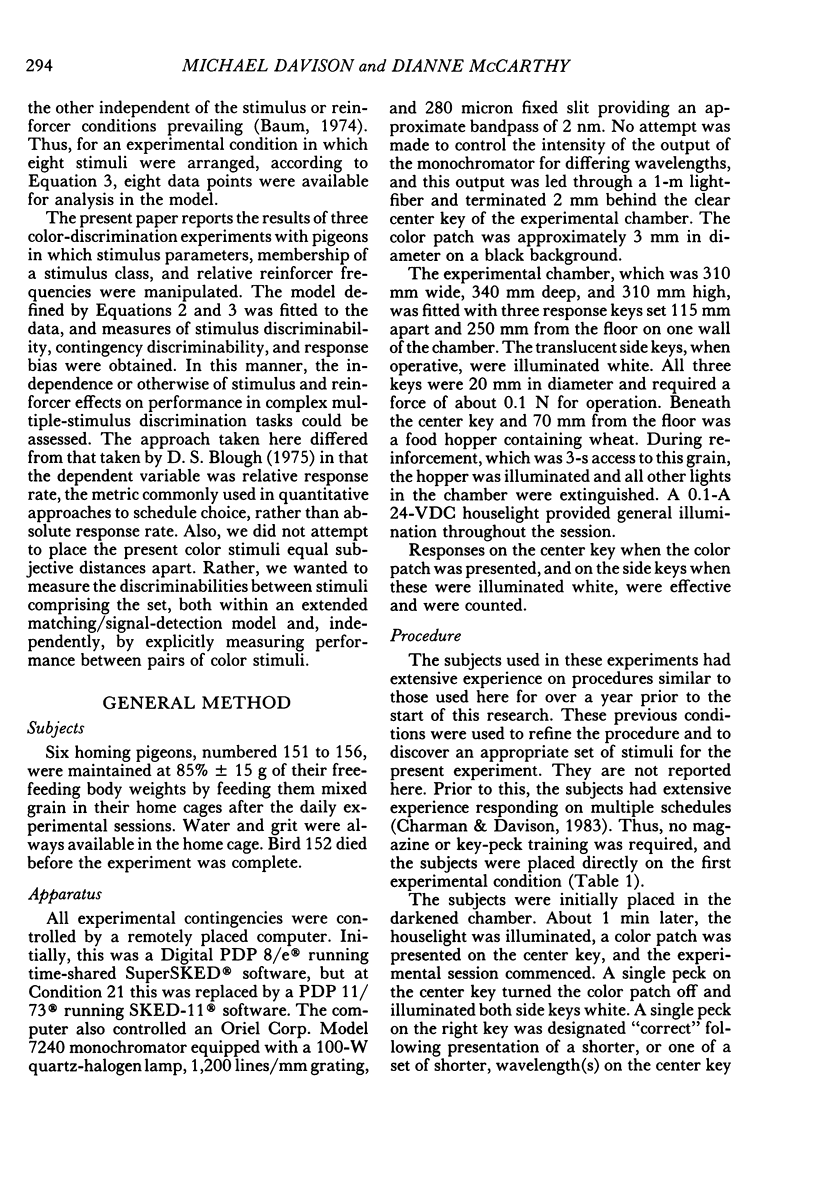
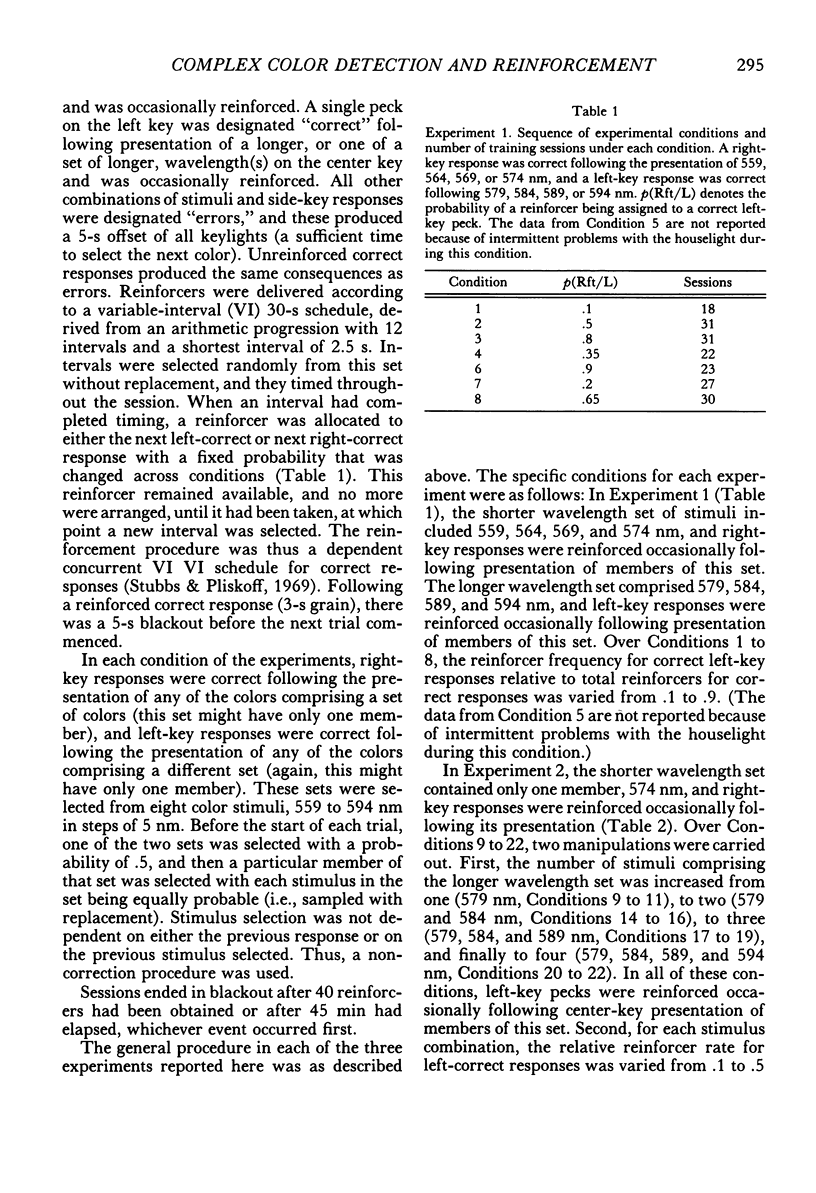
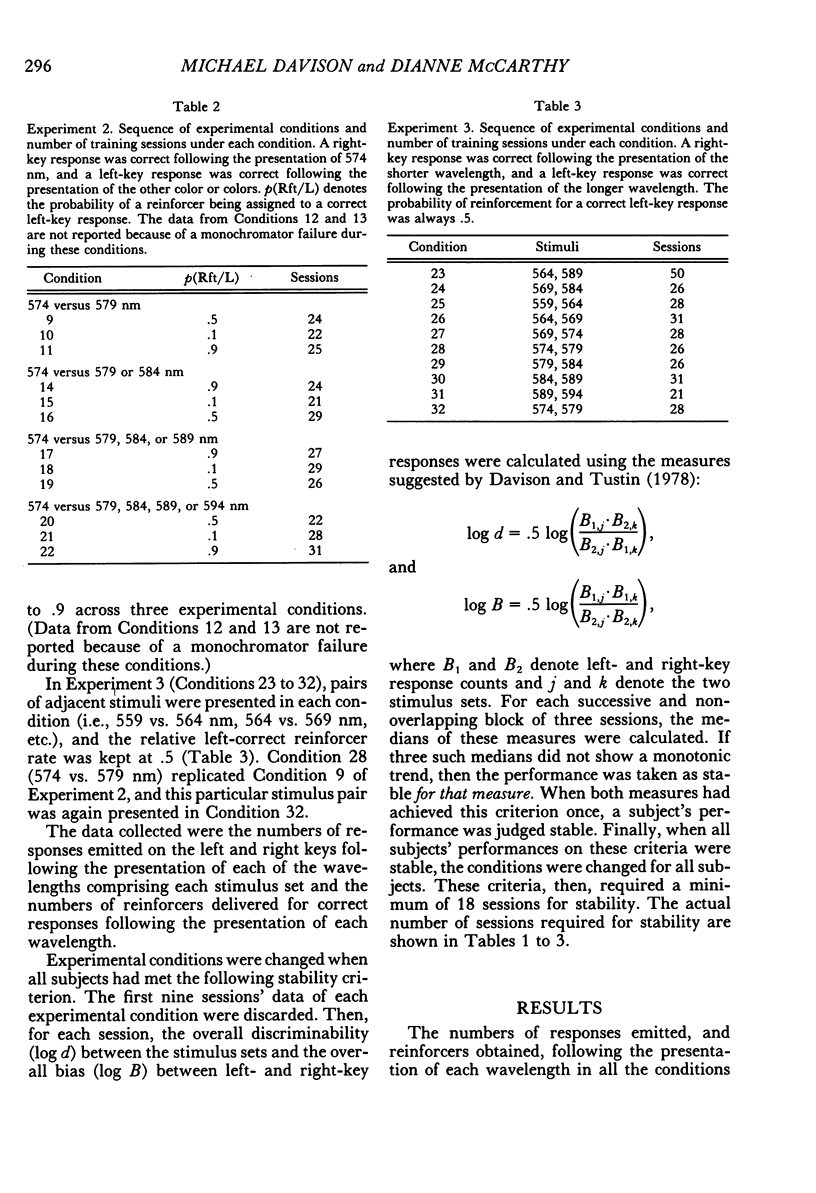
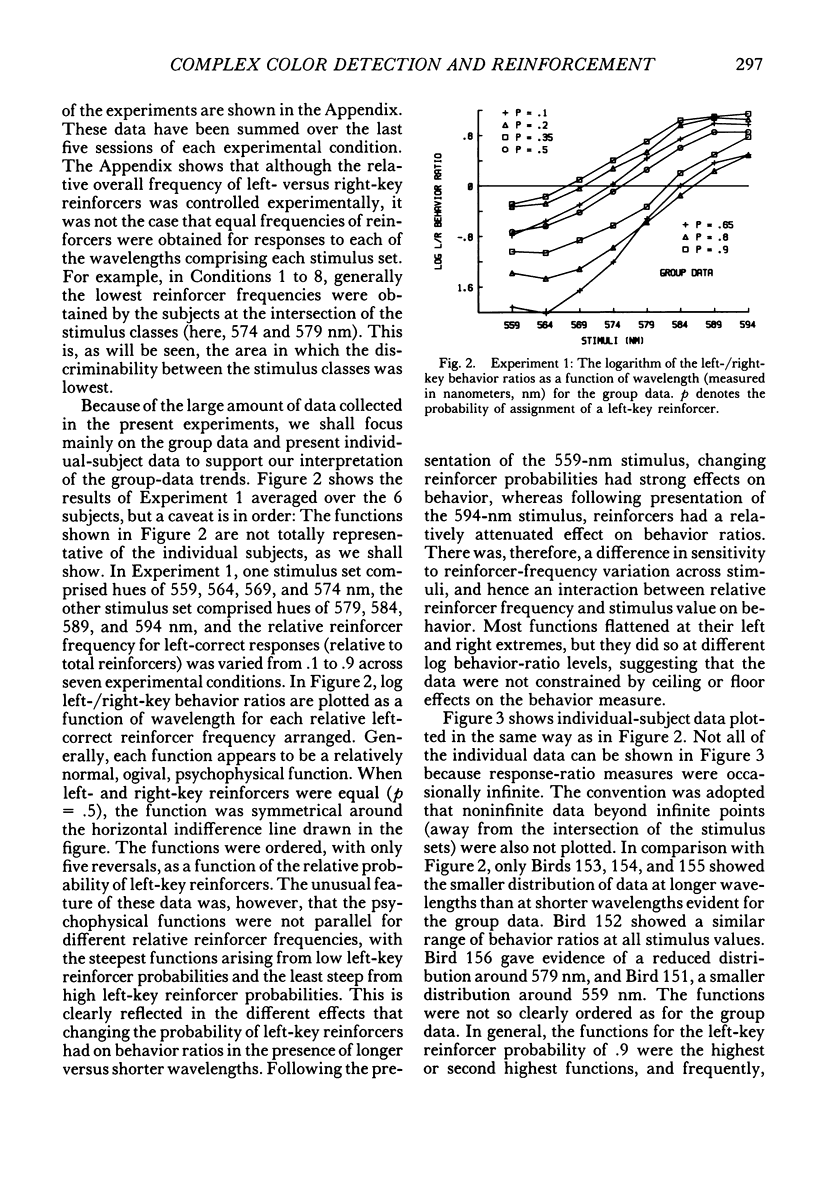
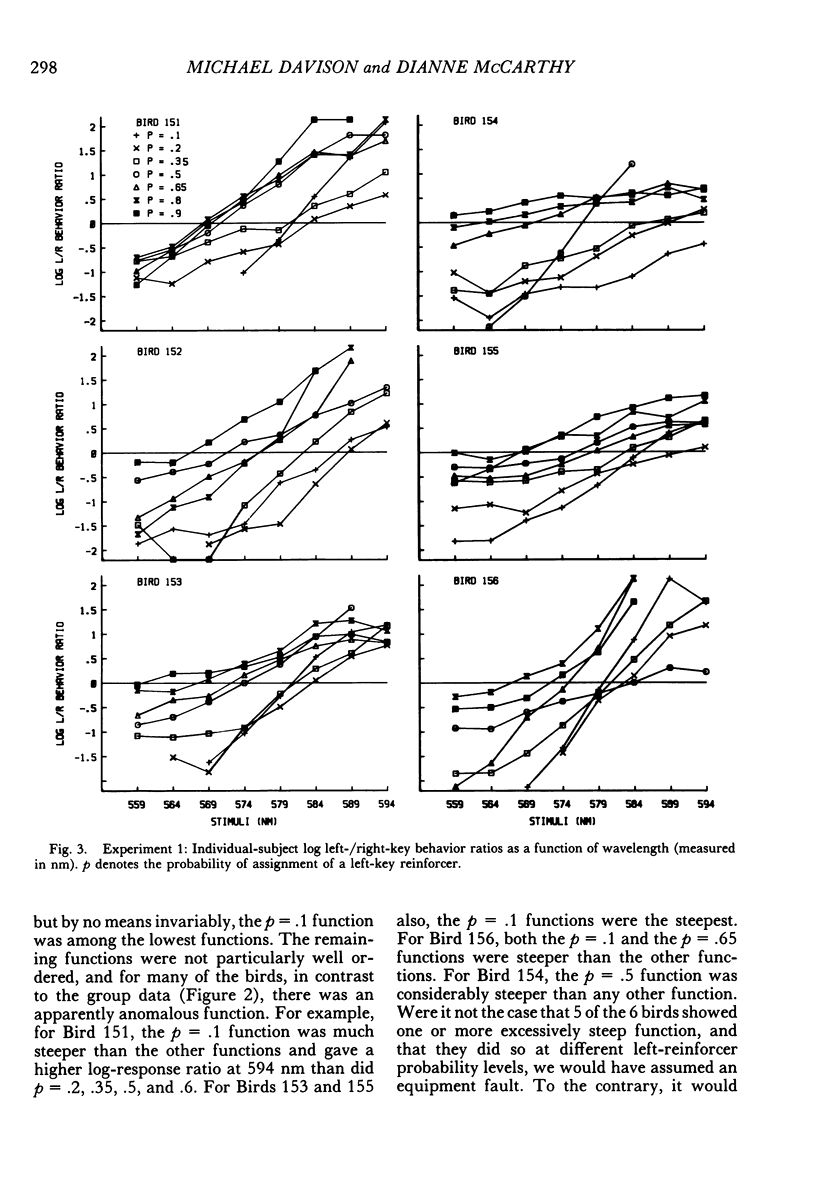

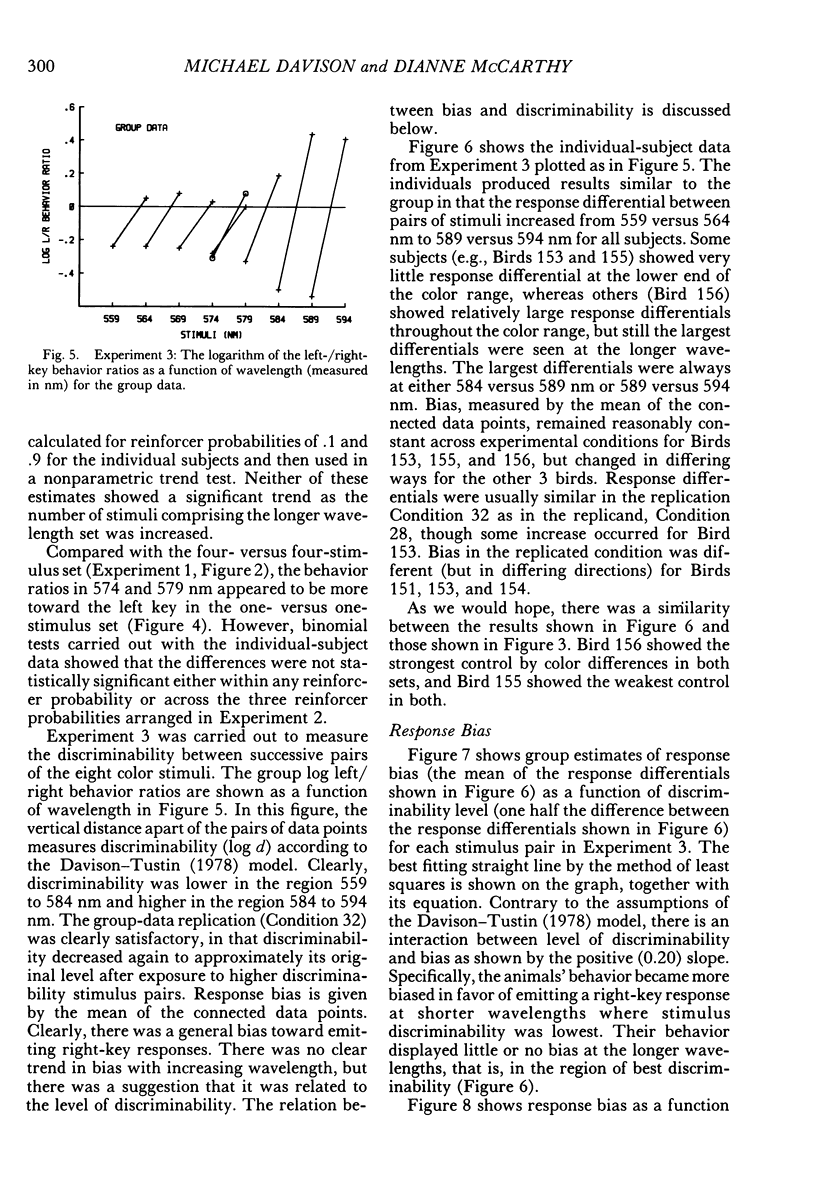
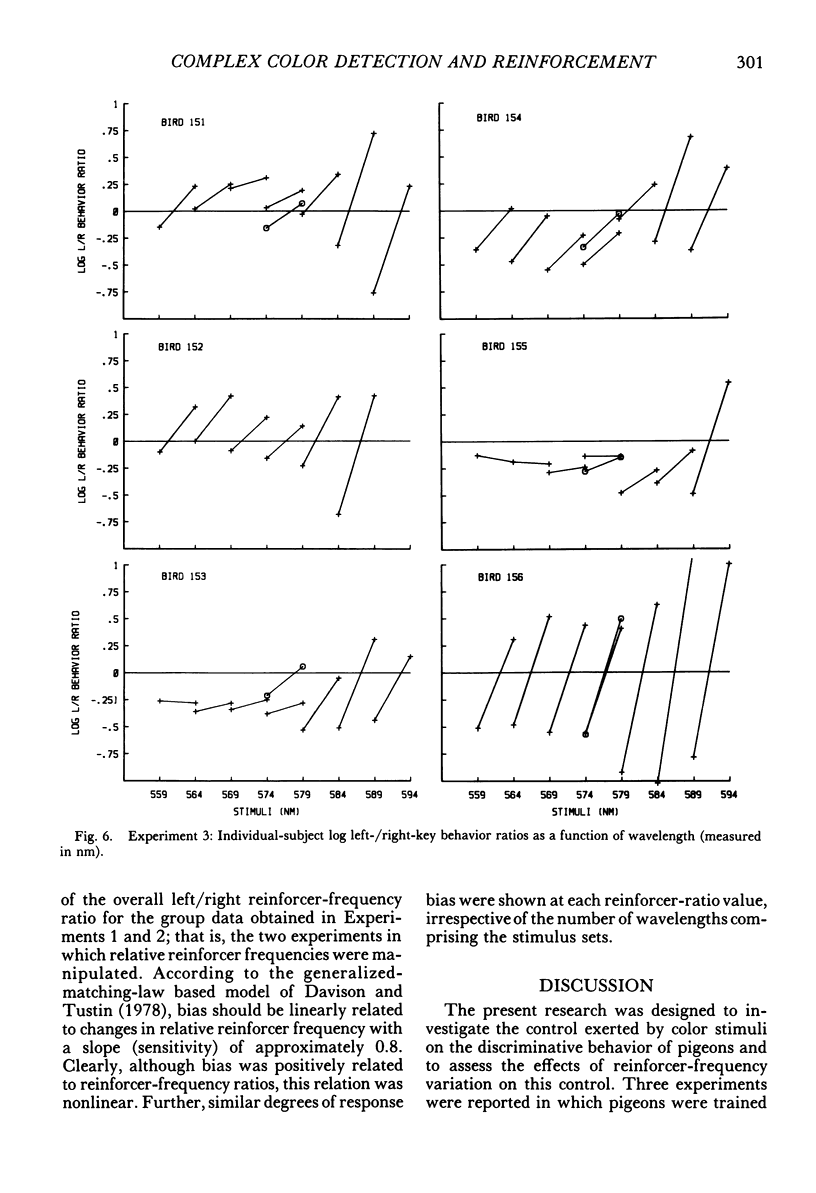
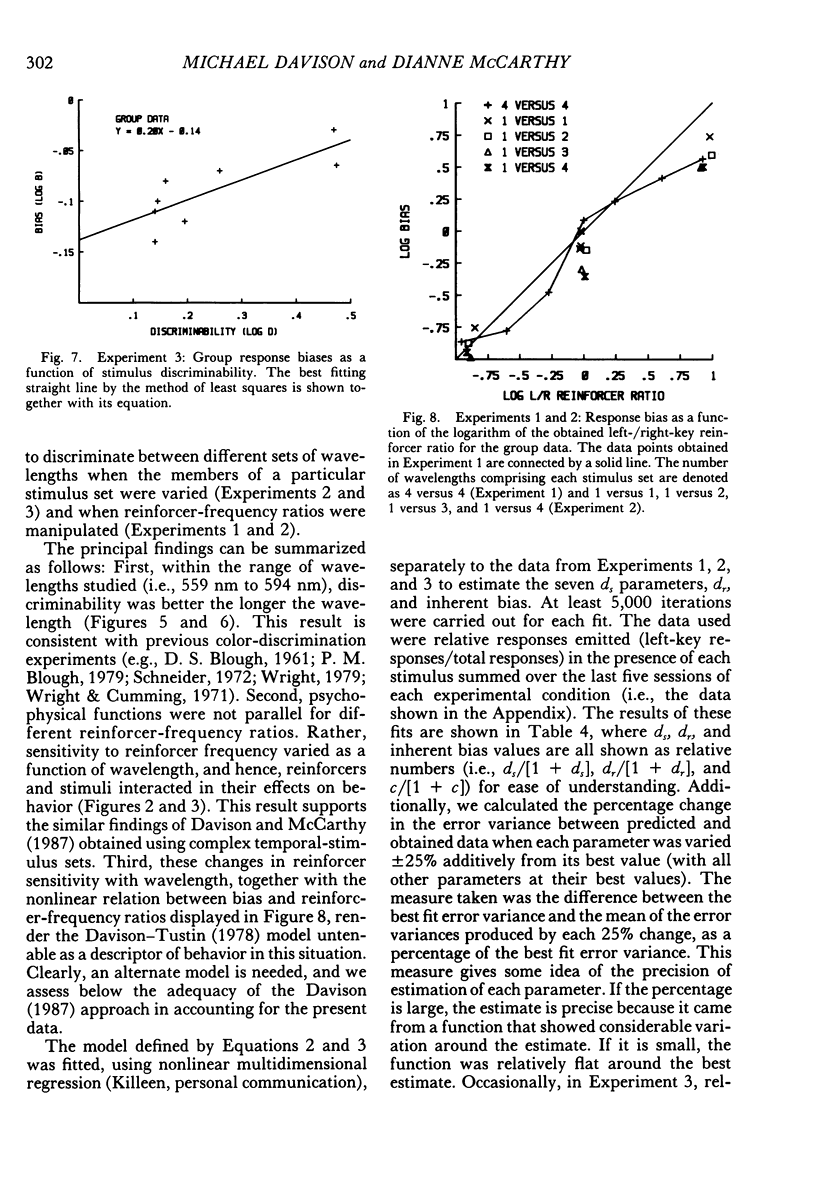
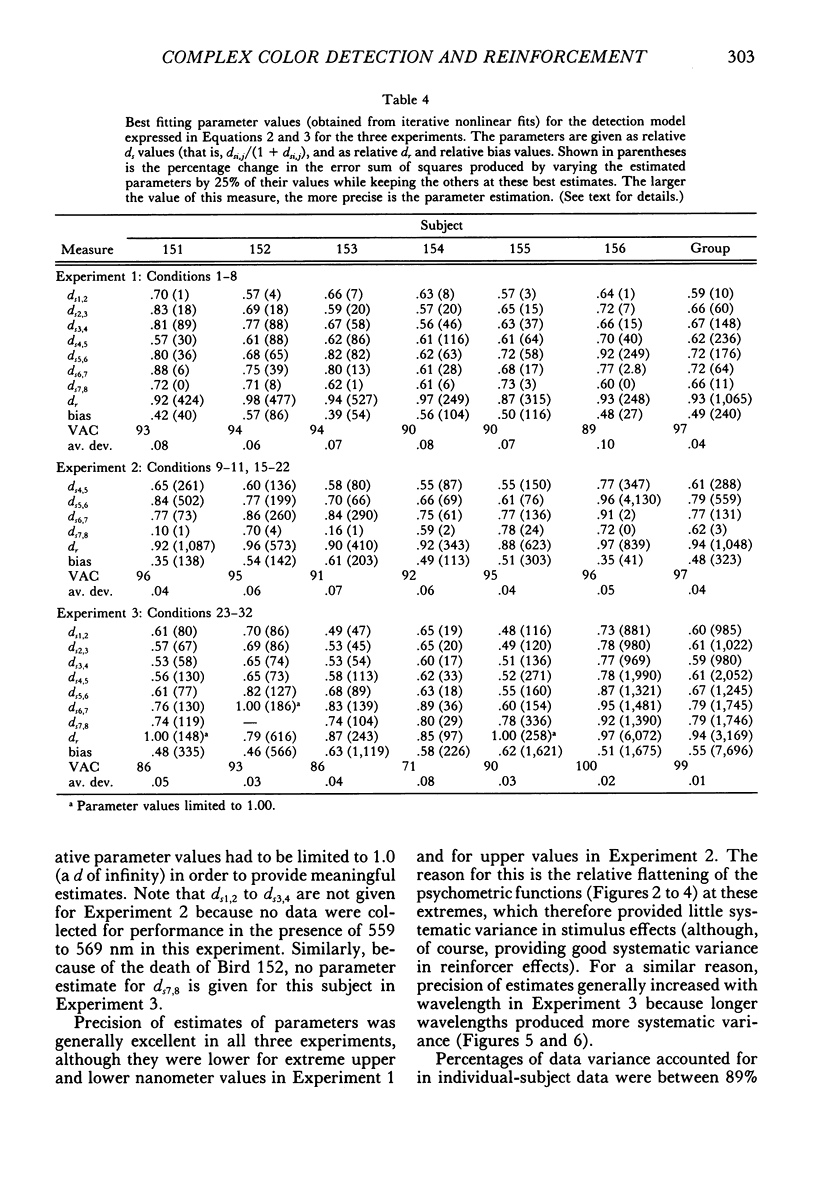
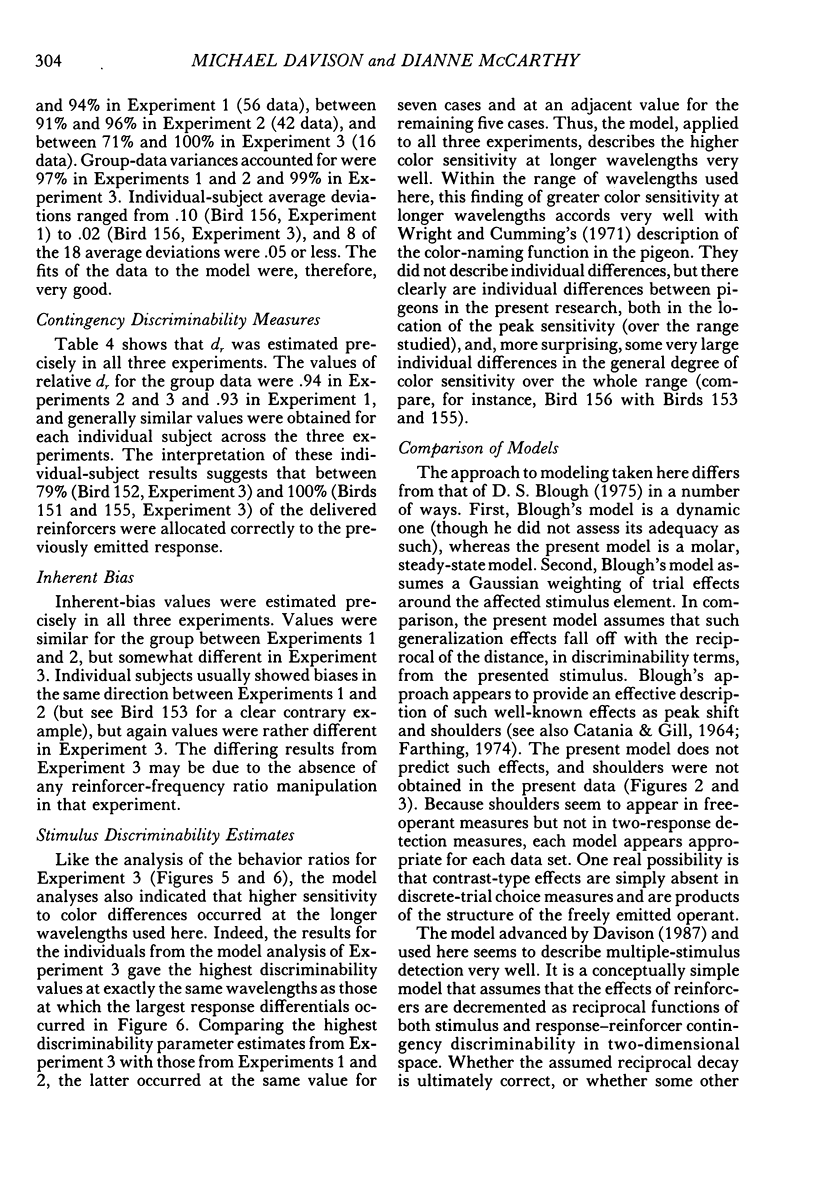
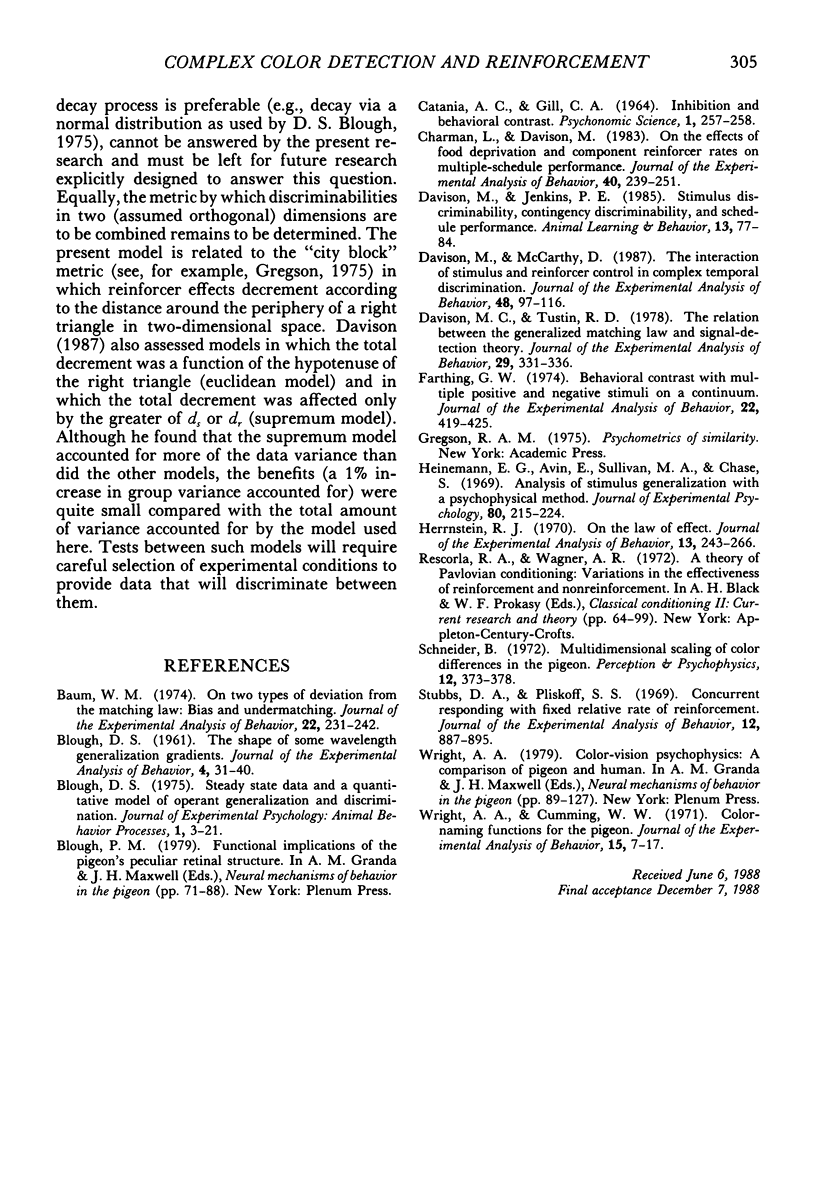
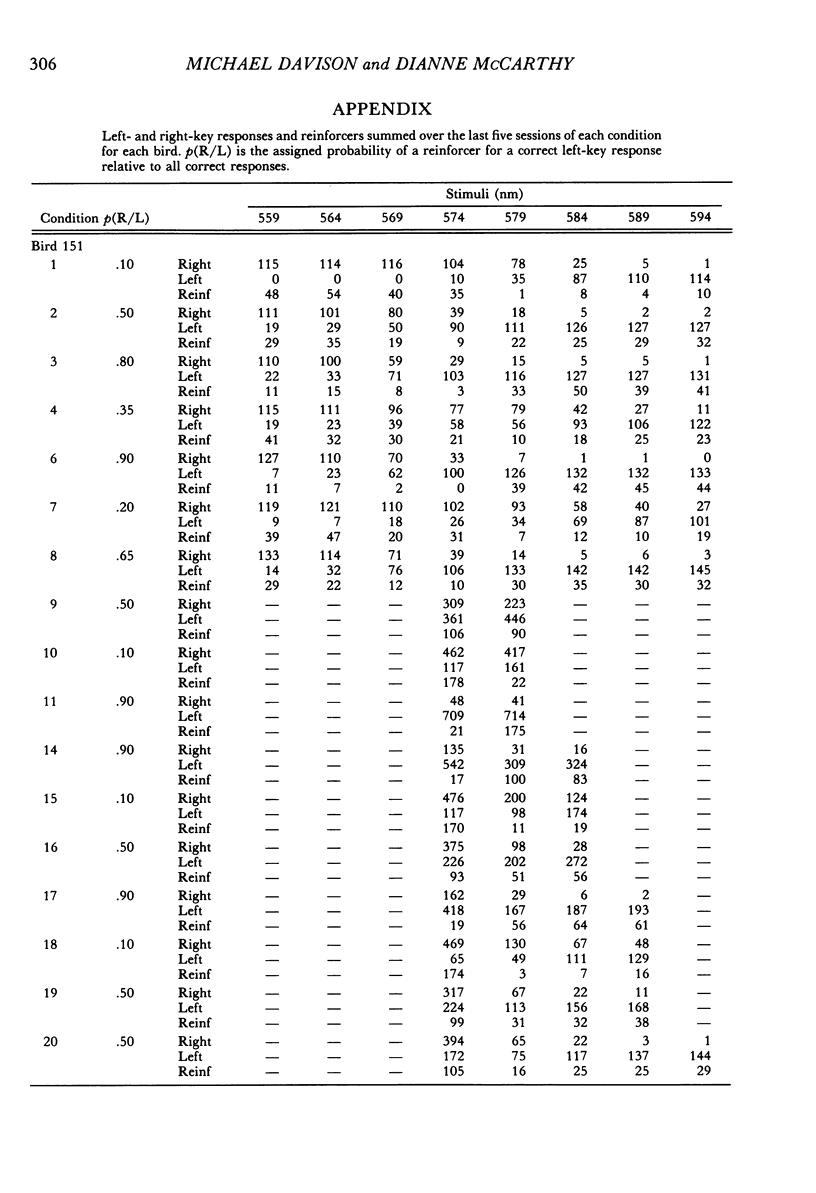

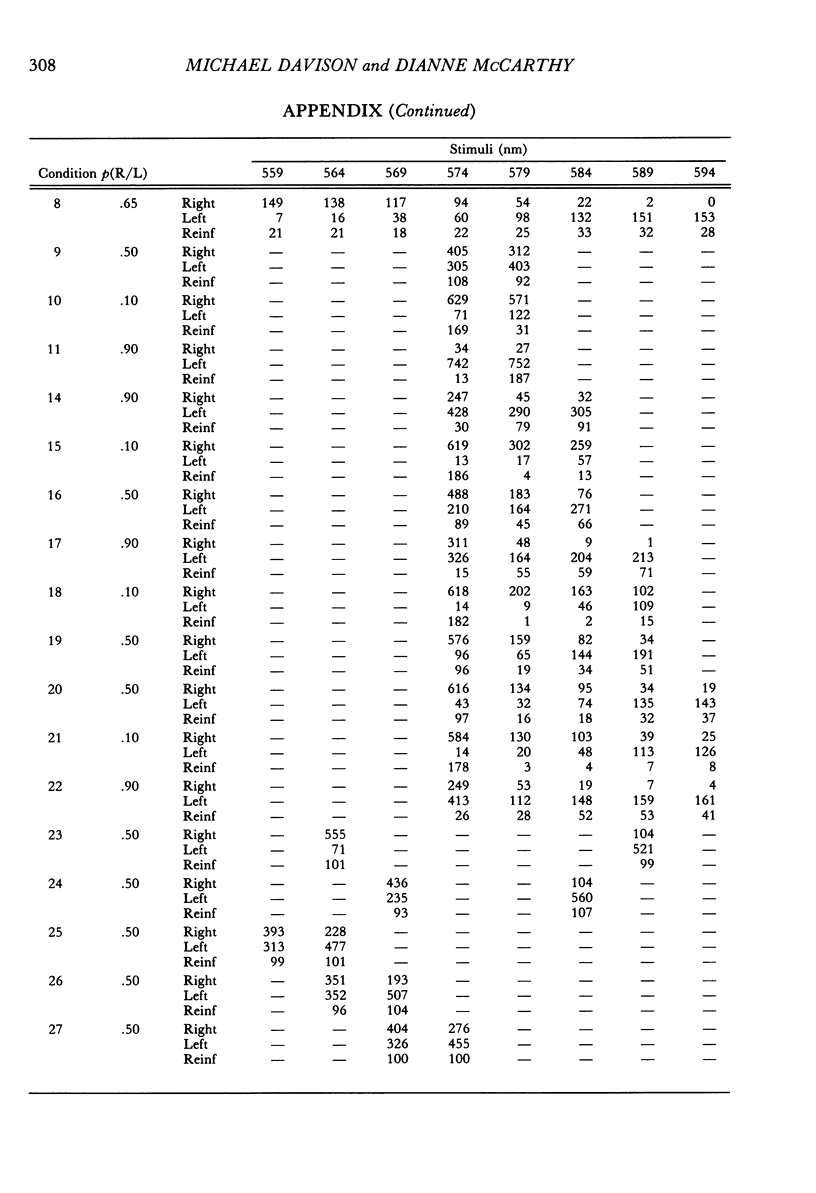
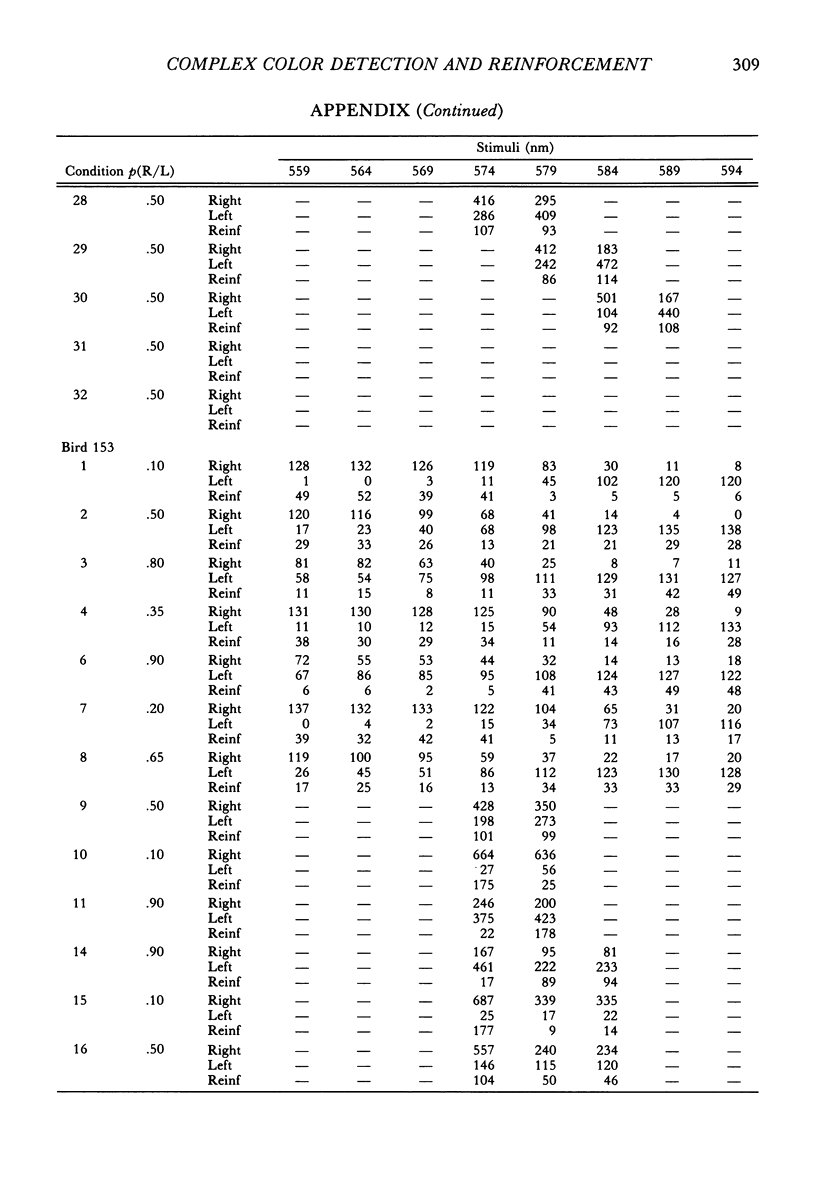
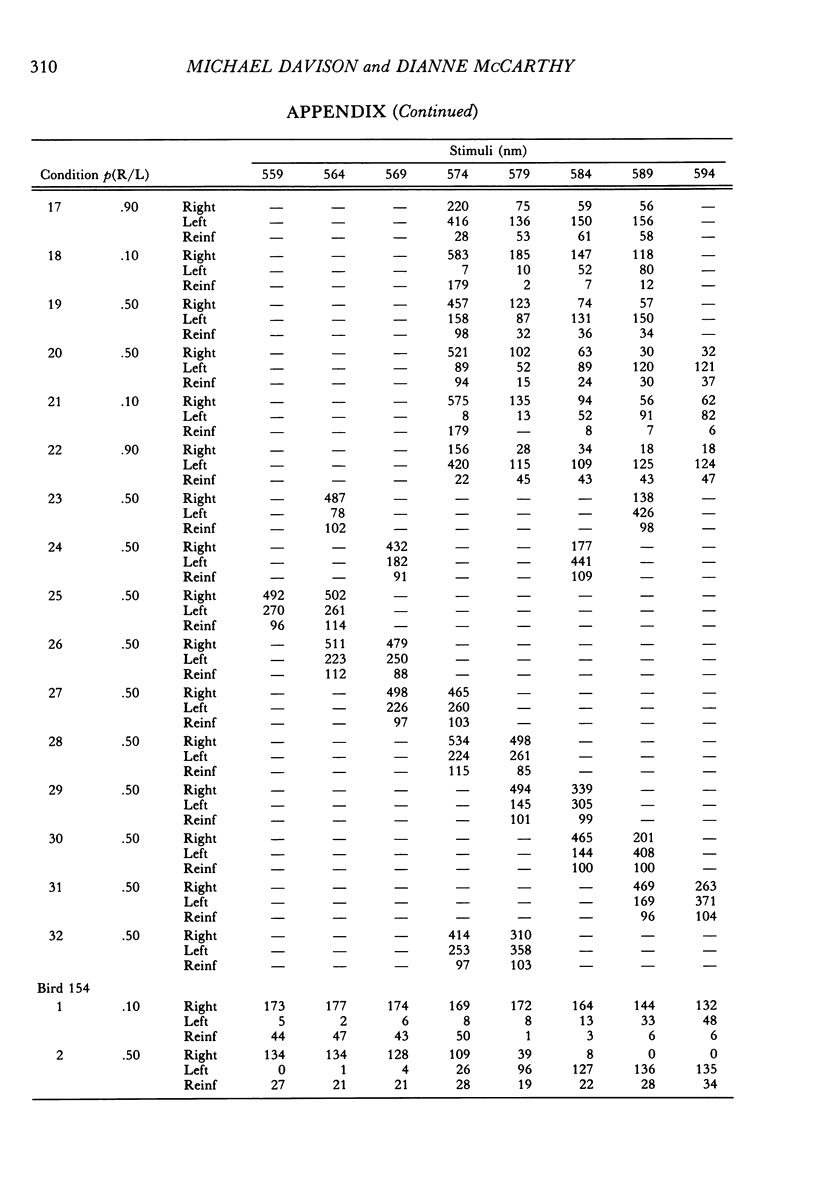
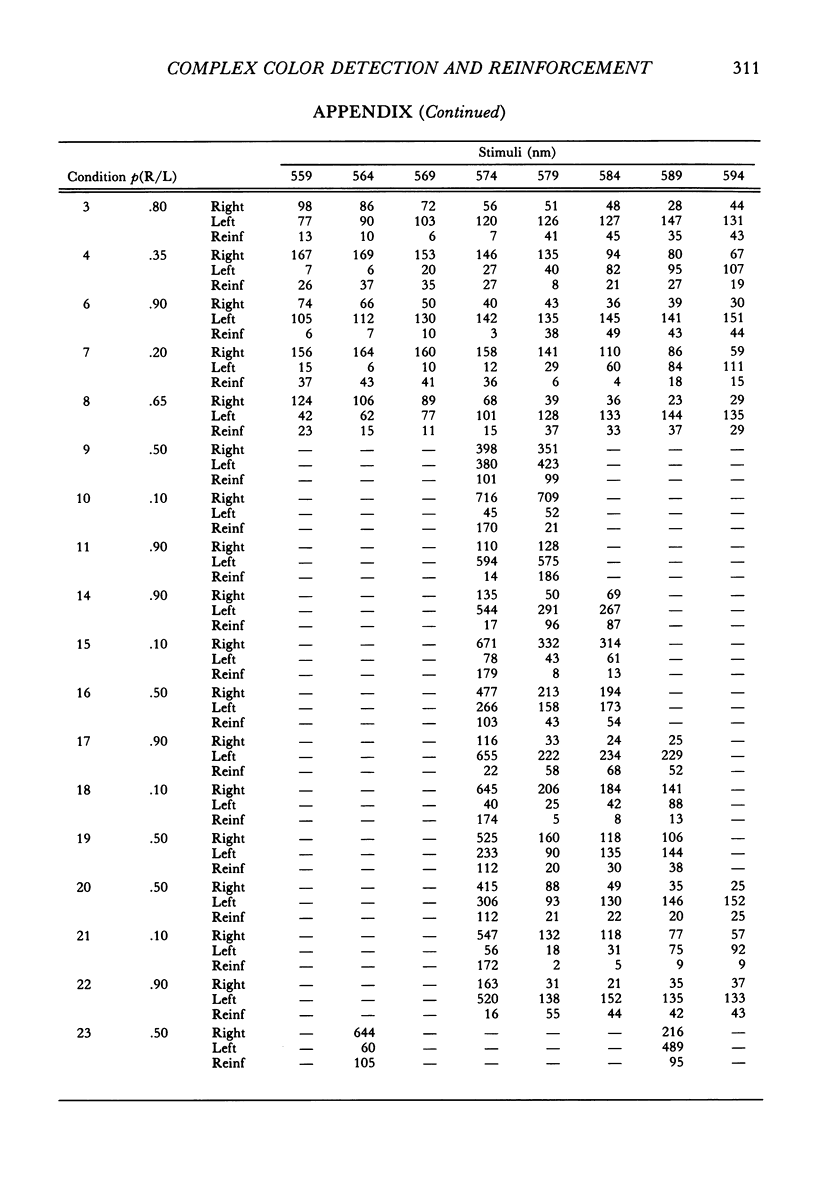
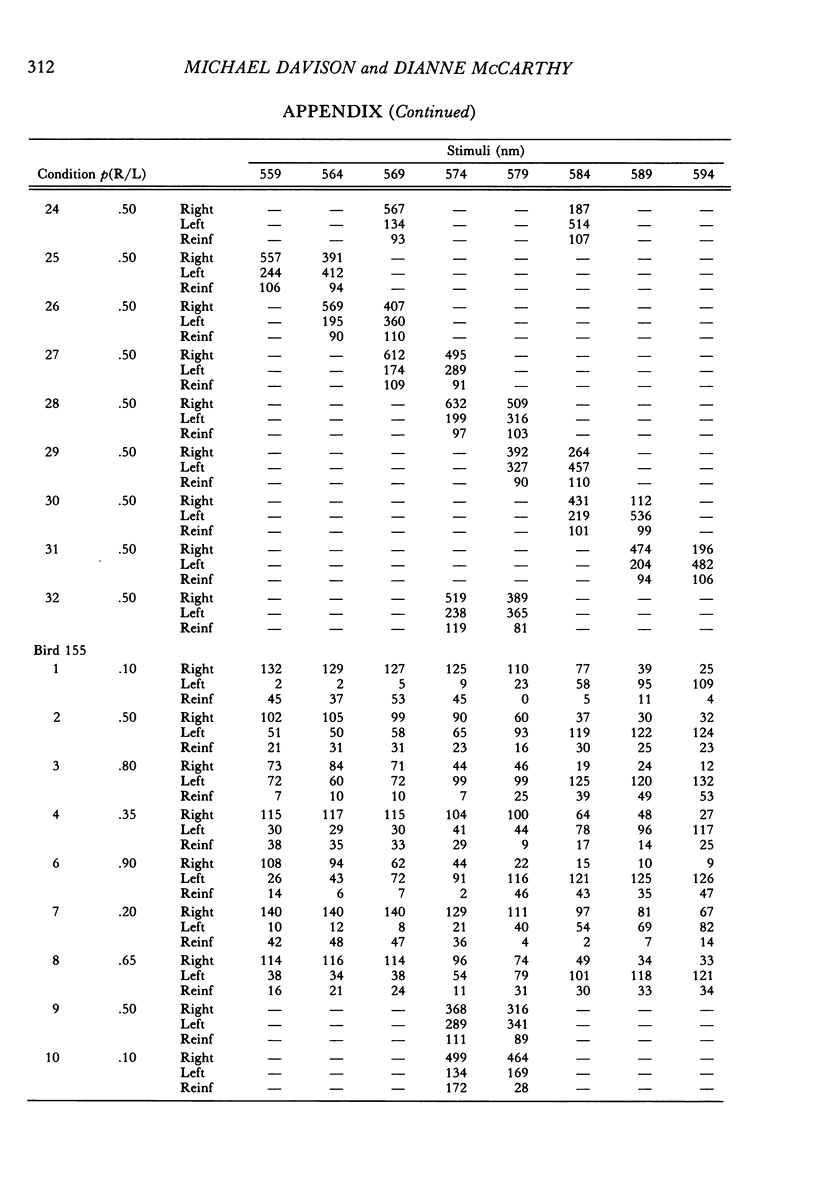
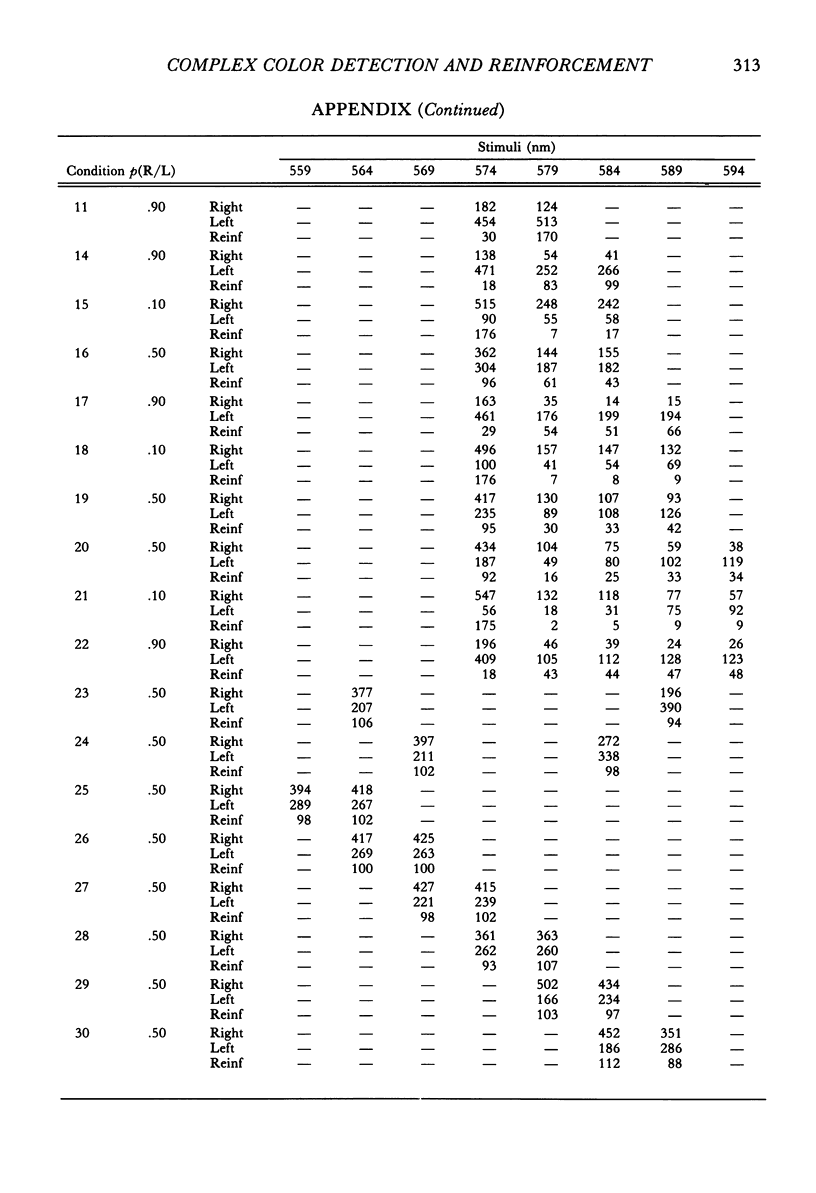
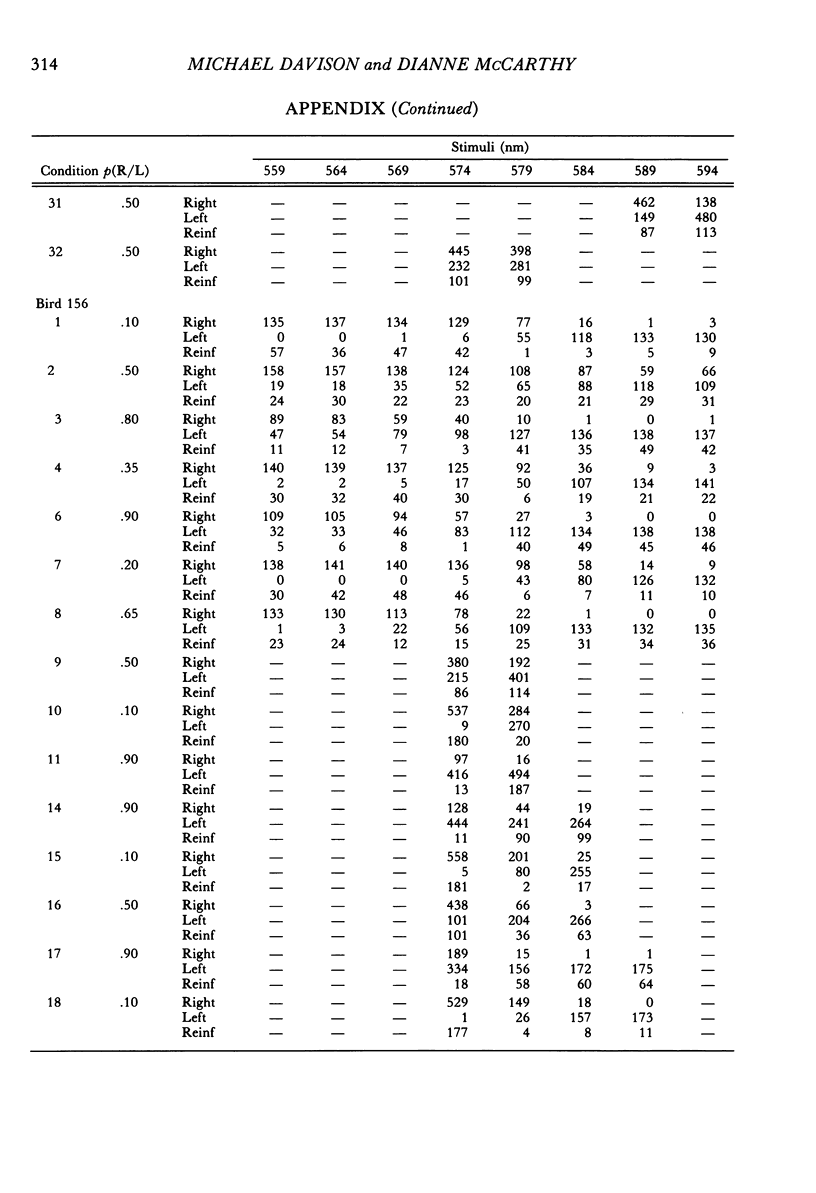
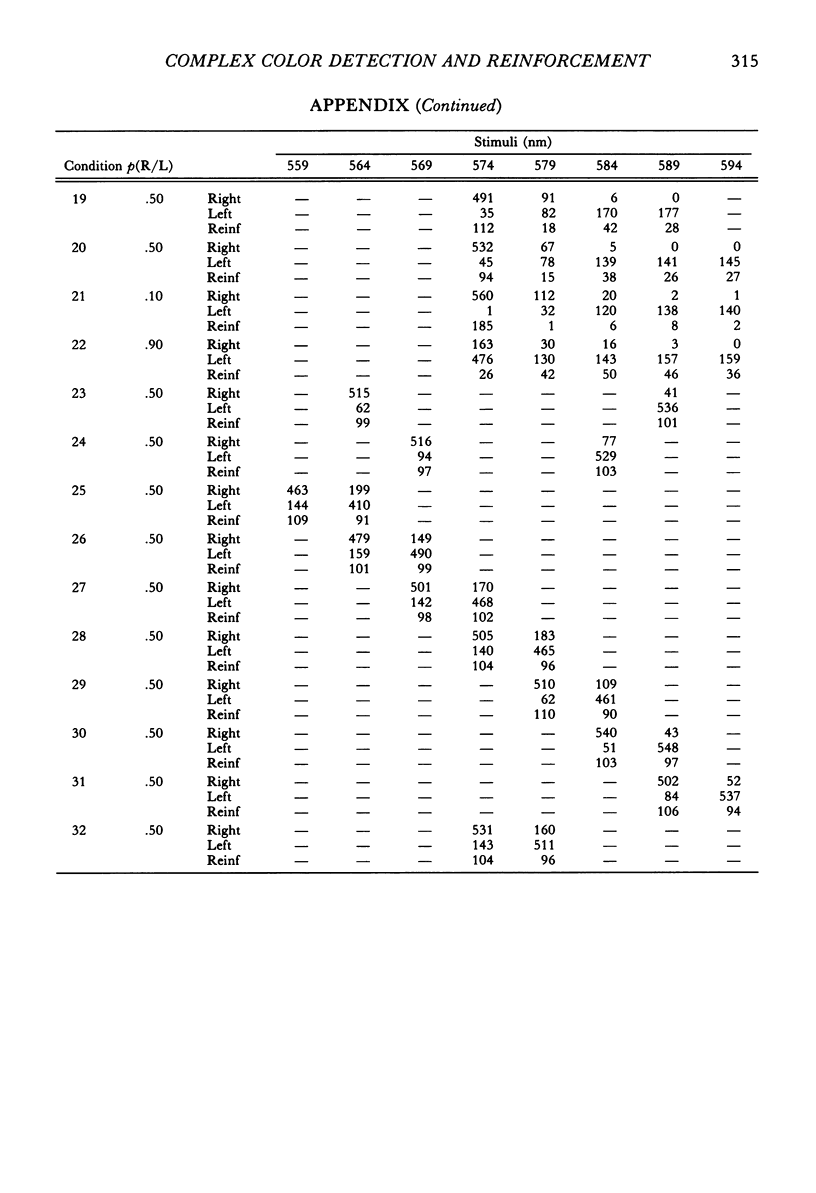
Selected References
These references are in PubMed. This may not be the complete list of references from this article.
- Baum W. M. On two types of deviation from the matching law: bias and undermatching. J Exp Anal Behav. 1974 Jul;22(1):231–242. doi: 10.1901/jeab.1974.22-231. [DOI] [PMC free article] [PubMed] [Google Scholar]
- Blough D. S. The shape of some wavelength generalization gradients. J Exp Anal Behav. 1961 Jan;4(1):31–40. doi: 10.1901/jeab.1961.4-31. [DOI] [PMC free article] [PubMed] [Google Scholar]
- Charman L., Davison M. On the effects of food deprivation and component reinforcer rates on multiple-schedule performance. J Exp Anal Behav. 1983 Nov;40(3):239–251. doi: 10.1901/jeab.1983.40-239. [DOI] [PMC free article] [PubMed] [Google Scholar]
- Davison M. C., Tustin R. D. The relation between the generalized matching law and signal-detection theory. J Exp Anal Behav. 1978 Mar;29(2):331–336. doi: 10.1901/jeab.1978.29-331. [DOI] [PMC free article] [PubMed] [Google Scholar]
- Davison M., McCarthy D. The interaction of stimulus and reinforcer control in complex temporal discrimination. J Exp Anal Behav. 1987 Jul;48(1):97–116. doi: 10.1901/jeab.1987.48-97. [DOI] [PMC free article] [PubMed] [Google Scholar]
- Farthing G. W. Behavioral contrast with multiple positive and negative stimuli on a continuum. J Exp Anal Behav. 1974 Sep;22(2):419–425. doi: 10.1901/jeab.1974.22-419. [DOI] [PMC free article] [PubMed] [Google Scholar]
- Herrnstein R. J. On the law of effect. J Exp Anal Behav. 1970 Mar;13(2):243–266. doi: 10.1901/jeab.1970.13-243. [DOI] [PMC free article] [PubMed] [Google Scholar]
- Stubbs D. A., Pliskoff S. S. Concurrent responding with fixed relative rate of reinforcement. J Exp Anal Behav. 1969 Nov;12(6):887–895. doi: 10.1901/jeab.1969.12-887. [DOI] [PMC free article] [PubMed] [Google Scholar]
- Wright A. A., Cumming W. W. Color-naming functions for the pigeon. J Exp Anal Behav. 1971 Jan;15(1):7–17. doi: 10.1901/jeab.1971.15-7. [DOI] [PMC free article] [PubMed] [Google Scholar]


